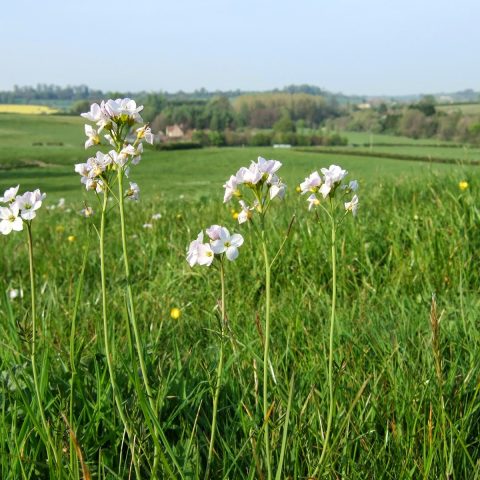Our story
Public consultation through the Council's Interim Climate Emergency Report and Action Plan highlighted that most residents of Perth and Kinross would like to see parks and greenspaces managed for biodiversity and climate change. Following on from this, we are exploring ways to green our greenspaces and are working with the Tayside Biodiversity Partnership regarding a proposed 10% for Wildlife initiative to green parks and small areas on housing developments.
Greenspace staff are currently reviewing the location of inappropriate shrubs across Perth and Kinross and removing them where they obstruct paths. Removed shrubs are replaced with pollinator-friendly shrub species which have been grown at the Council's nursery in Perth. In addition, native trees are being grown from cuttings or seed in the nursery which reduces the carbon emissions of transporting trees to Perth and Kinross and ensures local provenance.
The nursery is a valuable asset in assisting the Council in biodiversity planting projects as well as growing local food as during the COVID-19 lockdown the Council nursery supported the social enterprise, Giraffe, by growing vegetables for their café.
Other improvements include ceasing spraying of turf weeds, daisies, clover and dandelions on sports pitches twice annually, ceasing pathway spraying across countryside sites and minimal verge cutting with just 30% of the total verge area cut.
Communities are vital to greening our greenspaces and local community groups have resulted in biodiversity enhancing projects such as planting native wildlife hedges, thinning trees, planting pollinator friendly beds and providing bug hotels and bird boxes in community gardens, wildlife corridors and riparian improvement projects. Volunteers have also assisted with raking cut grass off wildflower meadows to allow wildflowers to pop up the following year.
Our advice
Research:
Creating a buzz in development - how can developers help Scotland's pollinators? Conference presentation by Dr Phil Sterling in particular: Creating a buzz in development - how can developers help Scotland's pollinators? | NatureScot
On the Verge Stirling is an inspiring community project About | on-the-verge (onthevergestirling.com)
The Don't Mow Let it Grow toolkit is an excellent resource full of information https://dontmowletitgrow.com/dont-mow-toolkit-now-online/
Advice:
Learn from other Councils and community groups that have made changes to their mowing regimes for the benefit of biodiversity.
Arrange public consultation prior to making any changes.
Communicate the expected benefits of management changes to the public using onsite signage, social media, leaflets and letter drops.
Investigate organising local volunteers to monitor biodiversity in parks and green spaces to increase education and nature connectedness.
Empower communities to manage their local spaces for people and nature.
Our metrics
During COVID-19 we asked members of the public to survey the different number of wildflower butterfly and pollinator species present in an uncut area compared to a cut area of grass. This will be repeated to measure the difference in areas of grassland cut less frequently. The Councils Biodiversity Ambassadors group will be encouraged to survey areas and an online survey is also available on the PKC website.







